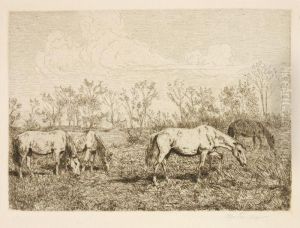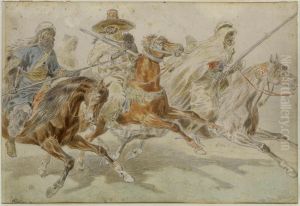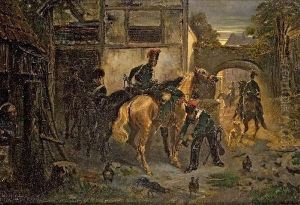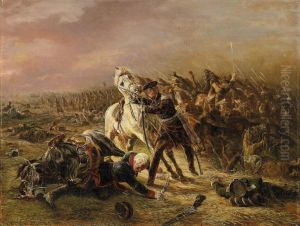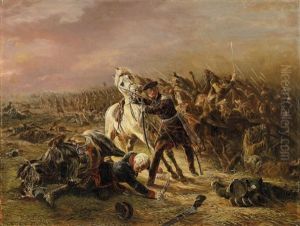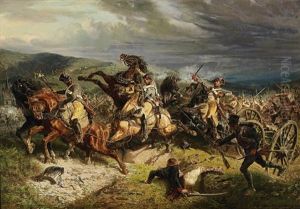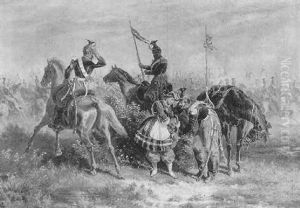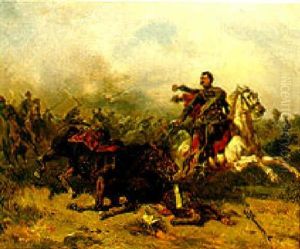Otto Clemens Fikentscher Paintings
Otto Clemens Fikentscher was a German painter and graphic artist, born on December 20, 1862, in Zwickau, Saxony. He was part of a family with a rich artistic background; his brother, Robert Fikentscher, was also an artist. Otto's work is characterized by its versatility, encompassing a range of subjects from genre scenes and landscapes to portraits and still lifes. His style evolved over the years, reflecting the influences of various art movements of the 19th and early 20th centuries, including Impressionism.
Fikentscher received his formal education in art at the Academy of Fine Arts Munich, where he studied under notable figures such as Ludwig von Löfftz and Nikolaus Gysis. Munich at the time was a vibrant artistic hub, offering a fertile ground for Fikentscher's development as an artist. His early work was marked by a detailed, realistic approach, gradually shifting towards a lighter, more impressionistic style as he absorbed the influences around him.
Throughout his career, Otto Fikentscher participated in numerous exhibitions, gaining recognition both in Germany and abroad. He was a member of several art associations, which played a crucial role in the dissemination of his work. Despite his success, Fikentscher remained somewhat detached from the leading art movements of his time, such as Expressionism, preferring instead to follow his own path.
Otto Clemens Fikentscher's legacy is one of quiet contribution to German art at the turn of the century. His works, though perhaps not as widely recognized today as those of some of his contemporaries, reflect a dedication to capturing the beauty and complexity of the world around him. He passed away on August 19, 1945, in Zwickau, leaving behind a body of work that continues to be appreciated for its artistic merit and historical significance.
